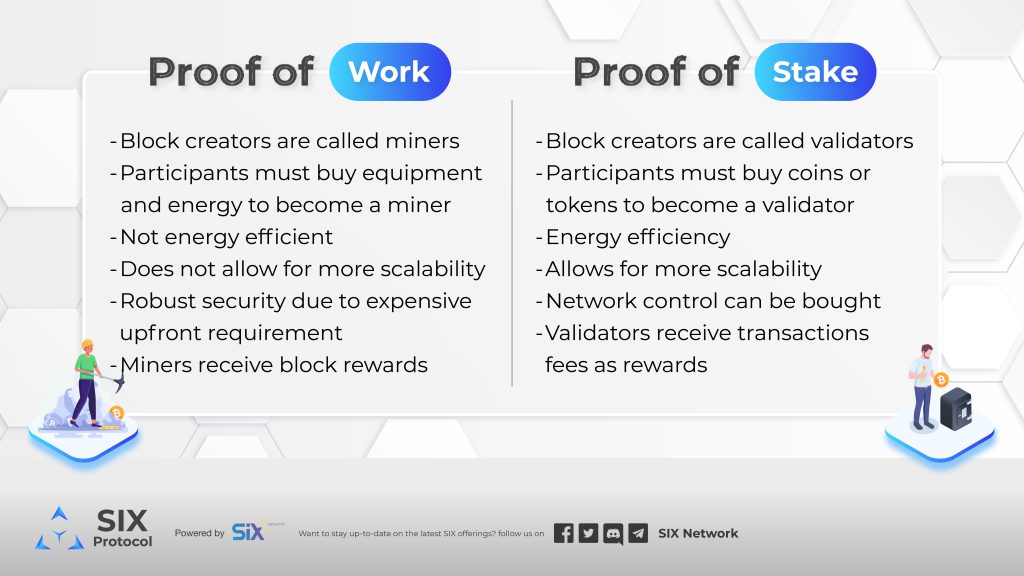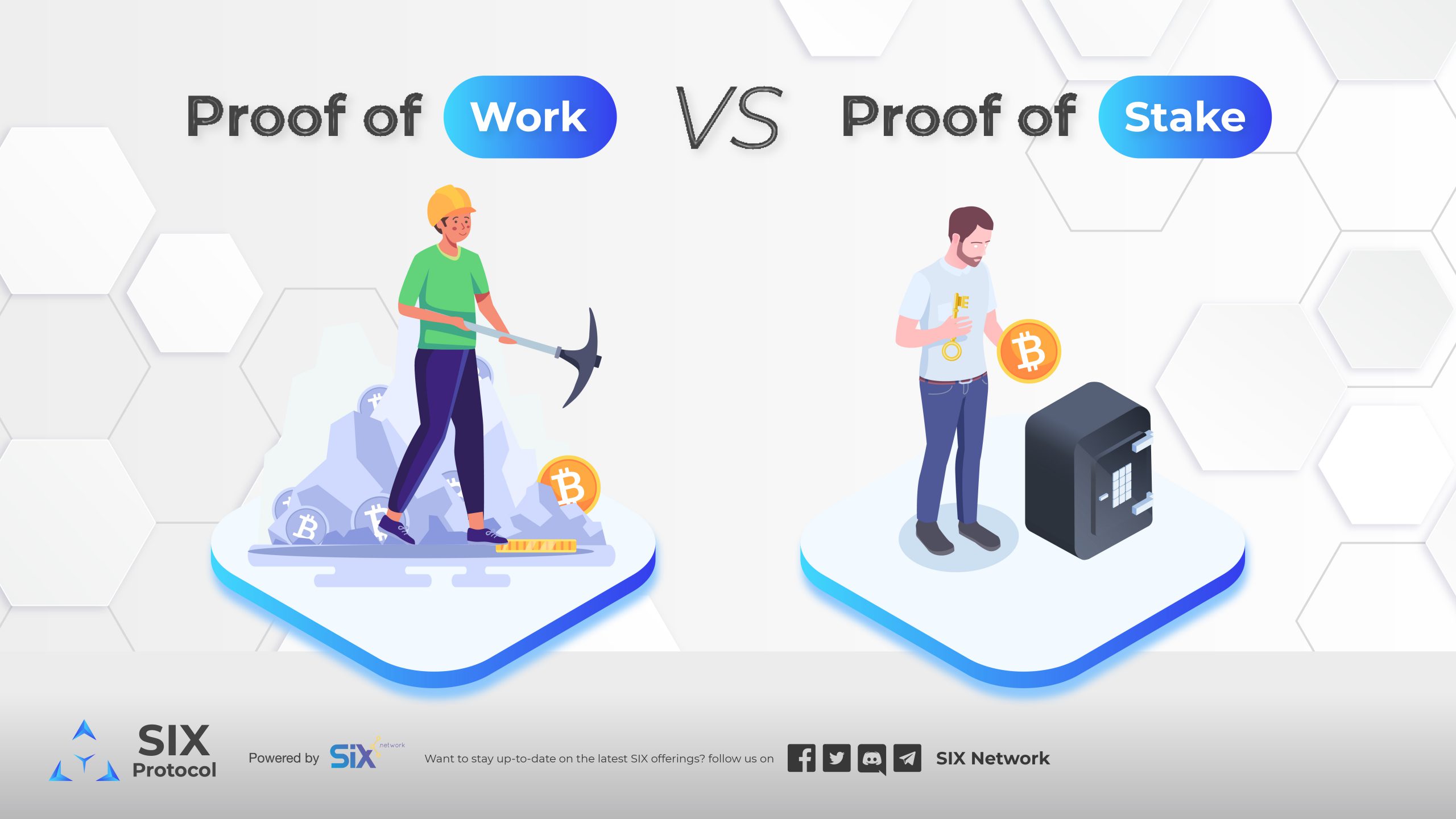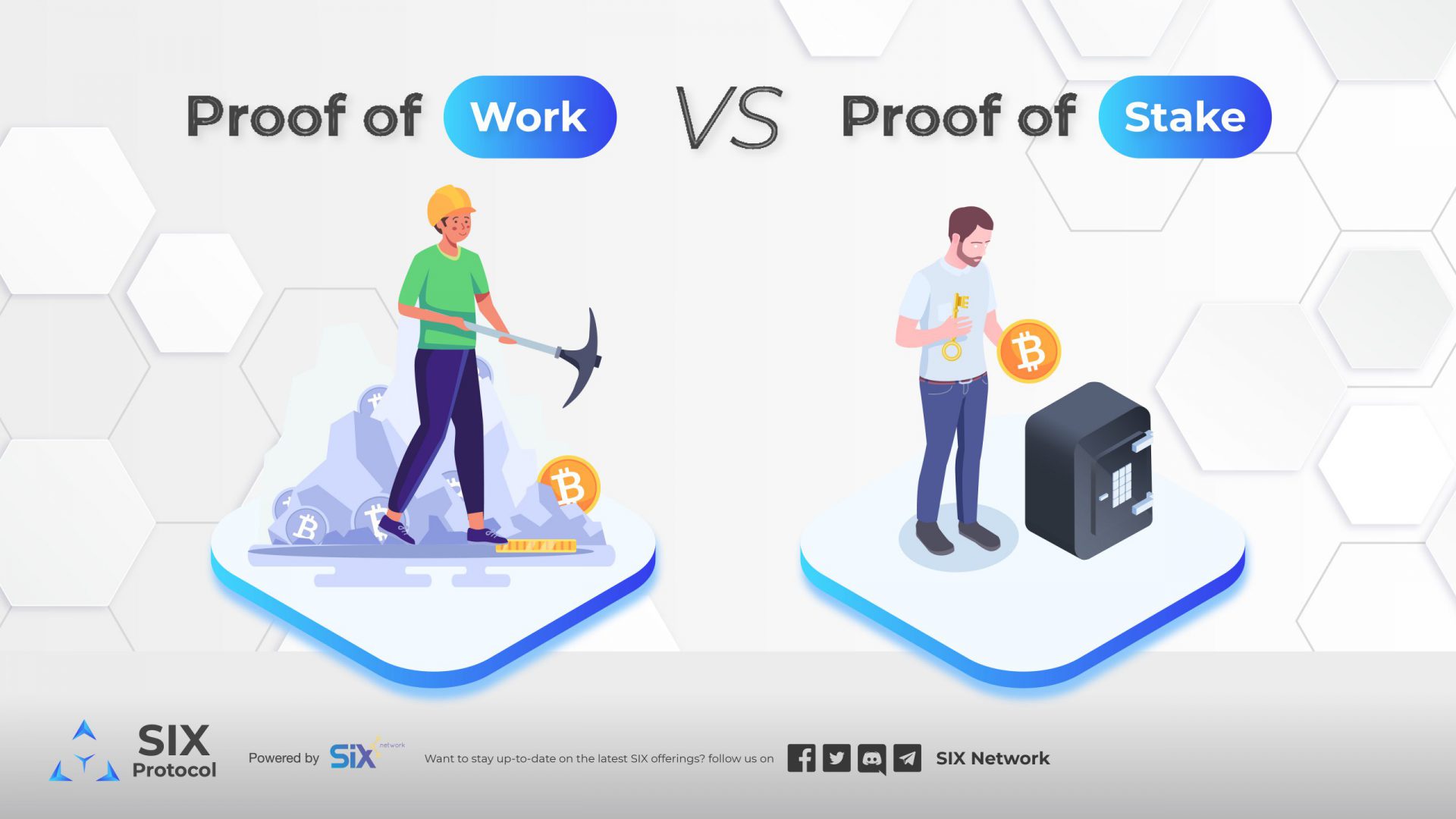Table of Contents
หากพูดถึงความปลอดภัยของระบบบล็อกเชน นับได้ว่าเป็นความปลอดภัยระดับสูงที่ยากต่อการแฮ็กหรือระบบล่ม แต่เหตุผลที่แท้จริงของระบบความปลอดภัยนี้อยู่ที่เบื้องหลังการทำงานเพราะมีผู้ตรวจทานข้อมูล (Verifiers) และ Verifiers สามารถแจกแจงออกได้สองรูปแบบหลัก ๆ
ผู้ตรวจทานข้อมูลมักรู้จักกันในชื่อ Validator และ Miner ทั้งสองมีหน้าที่หลักในการตรวจความถูกต้องของข้อมูล เก็บข้อมูลภายใน และดำเนินการอนุญาตธุรกรรมให้เกิดขึ้นภายในบล็อกเชน ถึงอย่างไรก็ตามทั้งสองก็ยังมีข้อแตกต่างกันในขั้นตอนการปฏิบัติงาน
ข้อแตกต่างระหว่าง Validators และ Miners
Validators เป็นคำใช้เรียกชื่อของผู้ตรวจทานข้อมูลบล็อกที่ใช้ระบบ Proof-of-Stake (PoS) ที่จะทำหน้าที่ในการตรวจสอบธุรกรรม ลงคะแนนเสียง และรวบรวมข้อมูลไว้เพื่อการดำเนินการสร้างบล็อกต่อ ๆ ไปเป็นสายหรือที่เรียกว่าเชน
หากอยากเป็น Validator มีวิธีง่าย ๆ คือการ “เข้าซื้อ” ตำแหน่งนี้ภายในเชนที่สนใจ หมายความว่าผู้ถือเหรียญของเชนหนึ่ง ๆ จำเป็นต้องนำเหรียญบางส่วนมาล็อกไว้กับเชนตามแต่ข้อกำหนด ซึ่งขบวนการนี้เรียกว่าการ Stake และจะได้รับส่วนแบ่งค่าธุรกรรมที่เกิดขึ้นภายในเชนตามอัตราส่วนแบ่งเป็นเปอร์เซ็นจากเหรียญที่นำมา Stake ไว้เป็นค่าตอบแทนจากเชน
Miners เป็นอีกกลุ่มผู้ตรวจทานที่ใช้ Proof-of-Work (PoW) ในระบบบล็อกเชนต่างเน็ตเวิร์กที่พบเห็นได้ทั่วไป การดำเนินการตรวจสอบข้อมูลภายในนี้มีหน้าที่ในการแก้ไขสมการที่มีความยากสูงจึงจะสามารถสร้าง Node ที่เชื่อมต่อไปเรื่อย ๆ ภายในเชนนั้น ๆ ต่อไป
กลุ่ม Miners ส่วนใหญ่ต้องลงแรงลงทุนซื้อเครื่องมืออุปกรณ์คอมพิวเตอร์สเป็กต์ความเร็วสูงและใช้พลังงานไฟฟ้าที่สิ้นเปลืองเป็นอย่างมากในการปฏิบัติงาน หรืออีกชื่อที่เคยได้ยินกันว่าการขุด และจากการขุดนี้จึงจะได้รับกำไรจากการแบ่งตามบล็อกตามลำดับ

เบื้องหลังกลไกระบบการตรวจสอบข้อมูลภายในบล็อกเชน
สมการที่เหล่านักขุดจะต้องแก้ไขนี้มีชื่อเรียกว่า Proof-of-Work Problem และเมื่อแก้สมการ cryptography สำเร็จแล้วบล็อกจะถูกสร้างขึ้นมาใหม่และบล็อกนั้น ๆ จะถูกกระจายอำนาจไปทั่วทั้งเชน จึงเป็นที่มาของคำว่าบล็อกเชน (Blockchain)
ซึ่งขบวนการแก้สมการของ miners มีชื่อเรียกทางเทคนิค inverse hashing ซึ่งก็คือการที่ธุรกรรมต่าง ๆ ถูกเรียบเรียงมาอยู่ในบล็อกเดียวกัน จากนั้นนักขุดหรือ miners จะปฏิบัติหน้าที่ในการตรวจทานข้อมูลและรับส่วนแบ่งไปตามที่กำหนดหากแก้สมการสำเร็จเป็นคนแรก
กลไกอีกรูปในชื่อ Proof-of-Stake ที่เหล่า Validators เป็นผู้รับผิดชอบนั้นมีต้นแบบมาจาก Peercoin เป็นเจ้าแรกของตลาดแต่ได้รับความสนใจจริง ๆ เมื่อตอนที่เน็ตเวิร์กอย่าง Ethereum หยิบยกขึ้นมาเพื่อใช้ในการตรวจทานข้อมูลของบล็อก และหากเทียบกับ Proof-of-work แล้วมีกลไกที่ง่ายและเป็นมิตรต่อพลังงานมากกว่าโดยการ Stake เหรียญของเชนนั้น ๆ
หน้าที่ปฏิบัติการของ Validator และ Miners มีหน้าที่ในการตรวจสอบข้อมูลและอนุญาตการดำเนินการธุรกรรมที่เหมือนกันแต่ส่วนแบ่งจากค่าธรรมเนียมที่จะได้รับขึ้นอยู่กับจำนวนเหรียญที่ Stake ตอนต้น และไม่มีการแข่งขันแบบ Proof-of-Work
บทสรุป
สรุปแล้วไม่ว่ารูปแบบการตรวจธุรกรรมของบล็อกจะเป็น PoW หรือ PoS นั้นมีความสำคัญในระบบนิเวศน์บล็อกเชนในการรักษาความปลอดภัยในเน็ตเวิร์กไม่ว่าการตรวจทานจะมาจาก Validators หรือ Miners ก็ตาม
ในปัจจุบันหลาย ๆ บล็อกเชนเน็ตเวิร์กมองเห็นความสำคัญและความคล่องตัวของการใช้ทรัพยากรที่น้อยลงอย่างระบบ Proof-of-Stake
และในโอกาสนี้ทางทีม SIX อยากจะขอเชิญชวนและประชาสัมพันธ์เรื่อง Individual Node Validator ของ SIX Protocol ว่าเราจะเปิดบริการเร็ว ๆ นี้ และระบบ Validators ของเราเป็นระบบ Proof-of-Stake Authority (PoSA) ทางเราจะอัปเดตและให้ความรู้เกี่ยวกับเรื่อง Node และผลิตภัณฑ์ของ SIX Protocol ต่อไป
Individual Node Validator สร้างขึ้นมาเพื่อตอบโจทย์สำหรับผู้ที่กำลังมองหาโอกาสในการเป็นหนึ่งในผู้ร่วมการตรวจทานบล็อกและเสริมสร้างความแข็งแกร่งให้กับบล็อกเชนของเรา หากต้องการเรียนรู้เพิ่มเติมสามารถเข้าไปศึกษาได้ตามลิ้งก์นี้
Related Posts

SIX Network Partners with Elysia to Expand RWA into Global Markets
The collaboration between SIX Network and Elysia marks a significant step in bringing together two strong Web3 technology companies to

SIX Network ประกาศเป็นพาร์ทเนอร์ร่วมกับ Elysia เพื่อขับเคลื่อน RWA สู่สากล
ความร่วมมือระหว่าง SIX Network และ Elysia ถือเป็นการเชื่อมโยงพลังของบริษัทเทคโนโลยี Web3 ชั้นนำที่มีความแข็งแกร่งเพื่อพัฒนา ecosystem และเปิดโอกาสให้เกิดการแลกเปลี่ยนในระดับภูมิภาค ร่วมพัฒนาศักยภาพ RWA บนเทคโนโลยี Web3 ความร่วมมือในครั้งนี้มีเป้าหมายที่จะเสริมสร้าง ecosystem ของสินทรัพย์จริงในโลกดิจิทัล โดยใช้เทคโนโลยีบล็อกเชนมาช่วยให้การเข้าถึงสินทรัพย์จริงอย่างอสังหาริมทรัพย์และสินทรัพย์มูลค่าสูงง่ายขึ้น นอกจากการขยายตลาดและผู้ใช้งานในไทยและระดับสากล ความร่วมมือระหว่าง

SIX Token เตรียมลิสต์บน Maxbit แพลตฟอร์มนายหน้าซื้อขายสินทรัพย์ดิจิทัลไทย 22 เมษายน 2568 นี้
SIX Network มีความยินดีอย่างยิ่งที่จะประกาศว่า SIX Token ($SIX) จะพร้อมให้ซื้อขายอย่างเป็นทางการบน Maxbit ในวันที่ 22 เมษายน 2568 โดย Maxbit คือโบรกเกอร์สินทรัพย์ดิจิทัลที่ได้รับใบอนุญาตและอยู่ภายใต้การกำกับดูแลของ ก.ล.ต.ไทย โดยได้รับการสนับสนุนจาก PTG Energy ที่พร้อมให้บริการซื้อ-ขายสินทรัพย์ดิจิทัลชั้นนำ

SIX Token will be listed on Maxbit, on 22 April 2025
We’re thrilled to announce that SIX Token ($SIX) will officially be listed on Maxbit, a licensed digital asset broker platform

Summary of SIX Network’s Activities Before the End of 2024
As we reach the final month of 2024, let’s take a look back at the highlights of this year, summarizing

SIX Token is Listing on Gate.io, Leading Global Digital Asset Exchange on 19 November 2024
We’re excited to announce that SIX Token ($SIX) will be listed on Gate.io, one of the world’s most renowned digital

Napathsorn Unchit
Prepare to fly higher with new technology and innovation that SIX Network will provide!


